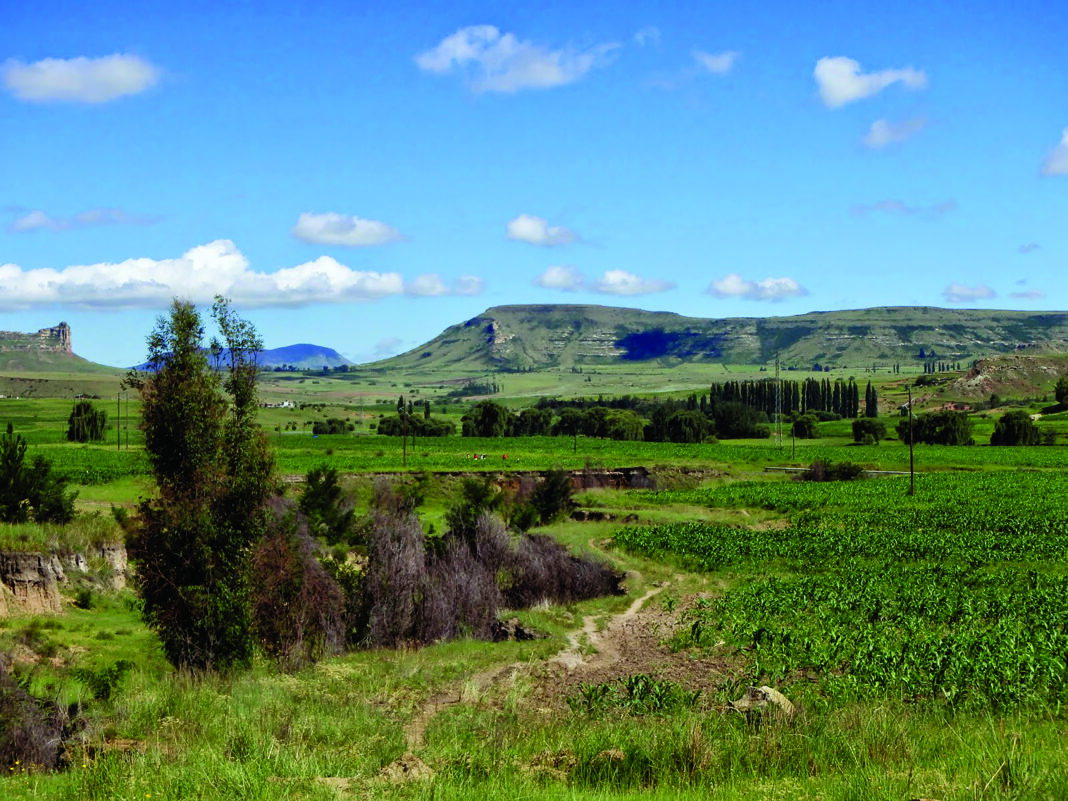Seabata Mahao
In Lesotho’s highlands, severe soil erosion has long plagued the arable lands, leading to the formation of deep gullies and significantly diminishing the productivity of the fields.
This erosion, primarily caused by torrential rains and exacerbated by air movement, has led to a drastic reduction in fertile land, impacting farmers’ output.
Soil erosion is the removal of topsoil from one place to another either by air or water, and Lesotho has been experiencing torrential rains in recent years which have caused a lot of soil erosion.
It is in that light that the field-land has been decreasing drastically causing farmers to produce less from their fields.
According to the Food and Agricultural Organisation (FAO), the country’s soils are under severe pressure as a result of natural conditions and human activities, triggering soil erosion, land degradation and depletion of soil organic matter.
The organisation continues noting that Soil data in Lesotho is limited and the lack of systematic and organised soil information impedes the management and monitoring of soil properties.
Despite various preventative traditional methods like erosion check-dams, gabions, terraces, slit traps, and sandbags, used as effective control of soil erosion, the challenge has remained elusive.
These methods, while somewhat helpful, haven’t significantly benefitted the arable lands.
However, a promising approach has emerged in the form of strategic tree planting spearheaded by relevant stakeholders.
The Annual National Tree Planting Day commemorated in March is spearheaded by the Ministry of Forestry, Range and Soil Conservation.
Monongoaha Pelei, an independent Forestry Consultant, emphasised the efficacy of this method in an interview with Seahlolo.
He explained that planting trees near arable land is not just about erosion control but also about preventing soil degradation.
“Trees, through their root systems, anchor the soil, reducing the movement of soil particles. Additionally, the forest canopy formed by these trees acts as a shield, lessening the impact of raindrops on the ground,” Pelei explained.
He distinguishes between shallow-rooted and deep-rooted trees, recommending the latter for their ability to secure soil more effectively.
“Deep-rooted trees like eucalyptus are particularly effective. Their roots penetrate deep into the soil, stabilising it even during dynamic movements,” he stated.
Beyond erosion control, Pelei highlighted the multifaceted benefits of these trees.
“They can serve various purposes, from providing wood for energy to offering fruits for consumption or sale. Some species, like eucalyptus, also have indigenous uses, such as in remedies for common ailments like the flu,” he continued.
Pelei likened the integration of trees into fields to intercropping, where a variety of crops like wheat and beans are grown together for mutual benefits, such as weed control and nitrogen fixation.
He elaborated on the extensive root systems of trees, which not only stabilise the soil but also improve its drainage and prevent compaction, enhancing water absorption.
“The Food and Agricultural Organisation (FAO) in a recent meeting with other stakeholders revealed that the increasing trend of soil degradation in arable lands in Lesotho is alarming and the organisation advocates for tree planting as a key strategy in sustainable soil management, simultaneously addressing soil degradation and erosion.
“In their presentation, they noted that farming practices themselves contribute significantly to soil erosion,” the consultant said.
He corroborated saying the combination of heavy rainfall and tilled land often leads to soil displacement, while high winds can exacerbate the problem by removing topsoil from exposed fields.
“…however, adopting methods like terrace farming and integrating trees into agricultural landscapes can significantly mitigate these effects, offering a sustainable solution to a growing challenge,” Pelei said.
Different reports have indicated that climate change, overgrazing and land degradation are causing erosion in Lesotho’s catchment areas at such an alarming rate that they threaten traditional farming and herding culture as well as related livelihoods.
Currently, less than 10%—667,000 acres—of Lesotho’s total land area of 7.5 million acres is suitable for agriculture.
The Ministry of Agriculture’s Information Officer, Lereko Masupha, indicated that the Ministry highly recommends farmers, especially those whose fields have been affected by soil erosion to plant trees on the terrace of their fields.
“We urge and encourage everyone to plant trees,” he said
He added, “Planting trees can maintain and restore our arable land on the fields while also bringing some of the benefits either fruits or energy resources such as oxygen and wood,”
“We are currently working together with the Ministry of Forestry, relevant stakeholders and the communities to control soil erosion that has removed our arable land,” Masupha said adding the trees can be very useful in controlling the flow of water in the fields regardless of the tree type.
In terms of the state of the arable land in Lesotho, he highlighted that they are still conducting studies countrywide.
“Lesotho has a lot of arable land countrywide of which some have been washed away by the torrential rains. We are going to restore this arable land by planting trees as well as all methods of controlling the erosions,” Masupha stated.
According to the World Bank, agriculture in Lesotho is dominated by subsistence farming which constitutes about 50 percent of GDP.
The bank noted that productivity is low, and the limited available data suggests that yields have slowly declined over the past 20-25 years due primarily to overstocking of livestock and soil erosion.
“Only 15 per cent of the country’s small area is suitable for cultivation while the rest is mountainous and suitable only for grazing. Growth in both human and livestock populations has (also) led to increasing pressure on arable land (50 persons per square mile),” the Bank said emphasising that overstocking, improper cultivation, torrential rainfall and inadequate soil cover have all contributed to the acute soil erosion.
The International Fund for Animal Welfare (IFAW), a global non-profit helping animals and people thrive together, emphasizes that overstocking, improper cultivation, torrential rainfall and inadequate soil cover have all contributed to the acute soil erosion in Lesotho.
The organisation suggests that land restoration is a system that can work.
It explained that Landscape restoration is one of many nature-based solutions to climate change that utilise natural assets and biodiversity to mitigate, adapt to, and build resilience in the face of climate change.
“It aims to restore the ecological characteristics and functions of a landscape using naturally regenerative techniques. One example of landscape restoration is planting trees to restore a deforested area—but landscape restoration goes beyond replanting,” IFAW said.
It added that strategies used in landscape restoration include rewilding, in which areas are protected from human intervention and left undisturbed, allowing natural processes to take place, and assisted regeneration.
IFAW suggested Agroforestry as another system which can be used, involving integrating trees and shrubs into agricultural practices.
“Planting trees with and around crops stabilises soil and reduces erosion, fixes nitrogen in the soil and creates more favourable conditions, provides shade for plants that need it, absorbs carbon dioxide (creating cleaner air), and improves soil moisture and fertility by dropping leaves to the ground. These trees also provide benefits to a farm’s livestock and the people working there,” the organisation noted.




